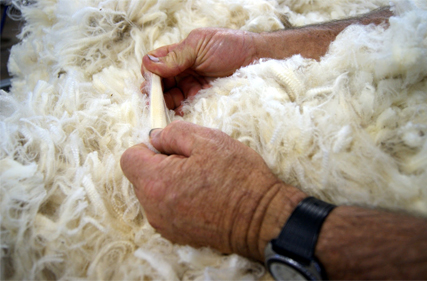
Merino Fleece opened the week with little hope of keeping last week’s price levels intact, however after the first 150 lots the support quickly fell away especially for poor style, low tensile strength, overlong staple length and poorly specified lots.
It became evident that with limited funds to spend exporters cautiously waded through the catalogues supporting better style & superior specified (high margin return) lots. With this cautious approach it was inevitable that as the market progressed, the price slippage accumulated.
Best style lots fell 10-20c whilst the lower style lots lost between 30 and 60c.
It became evident that with limited funds to spend exporters cautiously waded through the catalogues supporting better style & superior specified (high margin return) lots.
With this cautious approach it was inevitable that as the market progressed, the price slippage accumulated. Best style lots fell 10-20c whilst the lower style lots lost between 30 and 60c.
The AWEX EMI closed on 1388c, down 24c at auction sales in Australia last week. The AUD increased by 1.76c to settle just below 75 USC, in US terms the EMI rose 7c.
83.1% of the 45,149 bale offering cleared to the trade as exporters and processors adjusted to the unfavourable exchange rates whilst the ongoing logistic and finance issues really started to materialise and resulted in lower prices.
Merino Skirtings fell 10-20c as a result of the uncertain fleece trend with some increased resistance noticeable on the low VM and good style skirtings. Similar to the fleece sector, the percentage of skirting lots containing cotted, coloured and jowls increases each week, reflecting the challenges of a great season and lost 20-40c for the week.
Crossbred continued their cheapening trend with extreme price differences between the well classed and best style lots as opposed to the unskirted and or poorly classed lots. Prices fell between 7 and 43c across the crossbred MPG’s and 30 MPG fell below the 3rd percentile.
Merino Carding generally lost ground as the week progressed with a major local processor withdrawing from the bidding. Crossbred oddments were extremely irregular with micron being the main determining factor.
The just in time supply principles installed by the textile sector over the past 2 decades has finally hit its virtual
brick wall. Covid has left us with a legacy of slower than normal logistics which has fully stretched some export
houses financial capabilities.
It seems the main shipping lines are not without some fault in the current situation of slow sea freight logistics. Whilst I cannot see a short or medium term solution to this quantum change in logistic fundamentals, I am confident a solution will emerge but it is not expected this year.
The early market intelligence for next week seems to be an extension of this bearish trend.
-Marty Moses, Moses and Son
